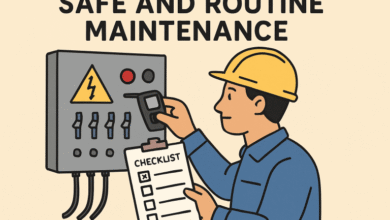Top Challenges in Adverse Media Screening and How to Overcome Them

Table of Contents
Introduction: The Significance of Adverse Media Screening
Adverse media screening is now a standard component of customer due diligence in a world that has become highly regulated and risk-averse particularly within industries such as finance, insurance, and fintech. It consists of screening of news, internet publications, and other published sources of information to single out persons or organizations associated with any risk like money laundering, terrorism, fraud, or corruption.
Although it is vital, effective adverse media screening implementation is faced with several challenges. This article discusses the most prevalent problems that organizations encounter and ways in which they can defeat them by applying the appropriate strategies and adverse media screening tools.
Challenge 1: Information Overload and Unrelevant Returns
Among the most serious problems of negative media screening is the enormous bulks of information. There is a vast quantity of information published by media sources every day, not all of which will be applicable to risk monitoring.
The Problem:
- Too many false positives due to common names or similar names
- Multiple-language, multiple-format unstructured data
- Lost hours of compliance looking at irrelevant alerts
How to overcome it:
Noise can be significantly removed, and accuracy can be improved with the help of using adverse media screening software based on advanced algorithms, natural language processing (NLP), and machine learning. Such technologies assist in sifting through the relevant materials and giving cases of high risk a priority.
Challenge 2: Linguistic and Geographic Issues
International companies have to track media that speak various languages and belong to diverse legal areas. The traditional systems have a tendency to fail when it comes to the coverage beyond English or they are not regionally relevant.
The Problem:
- Partial reporting of local or non English media
- Risk indicators that are missed because of language limitation
- Translations that are not accurate and are misinterpreted
How to overcome it:
Choose the negative press screening services that are multilingual and can access localized news outlets. Translatable cloud-based platforms that are region-specific in terms of risk profile can provide improved global coverage of compliance.
Challenge 3: Stale or Partial Data
Inaccurate or outdated media information can lead to severe cases of non-compliance, where companies will fail to note new instances of crime or changing risk profiles.
The Problem:
- Media updates or sources of low quality
- Partial personal or organizational risk history
- Lacks real time monitoring capability
How to overcome it:
The negative media screening tool should be invested in to continuously screen sources in real-time and refresh alerts. Seek platforms which collect data on trusted media across the world, government lists as well as legal databases which would provide complete view of risks.
Challenge 4: Compatibility with Current Systems
A lot of firms cannot find ways of incorporating adverse media screening tools into their current compliance programs or customer onboarding platform.
The Problem:
- Disjointed compliance processes
- Paper based data entry heightens chances of errors
- Bad usability and ineffectiveness
How to overcome it:
Select an adverse media screening software which allows API integration and can easily be incorporated within your existing CRM, KYC or AML systems. Automating workflow and centralizing data can help make your compliance operations efficient and minimize human error.
Challenge 5: False Positives and Risks Missing
False positives waste the compliance teams with unwanted tasks, whereas false negatives may cost the businesses exorbitant fines.
The Problem:
- False matching because of duplicate names
- Lost opportunities with few keyword tracking
- Laborious manual analysis
How to overcome it:
Implement negative media screening services based on AI-driven entity resolution and fuzzy matching as well as risk scoring systems. These characteristics enhance accuracy as they differentiate between individuals that have similar names and discover the veritable risk factors.
Challenge 6: Regulatory Compliance / Audit Ready
When regulators and auditors visit the businesses, they will have to prove that they have good screening practices and this is not easy to achieve when they have not been noted and audited.
The Problem:
- Poor audit records or logs
- Non-conforming or Uneven processes
- Challenge of establishing proactive risk management
How to overcome it:
Incorporate a negative news screening tool with options of customizable reporting, history of alerts, and audit-ready reports and documents. A screening process is well-documented, which guarantees transparency and compliance with regulations.
Best Practices of Efficient Adverse Media Screening
The best practices to enhance your negative publicity plan include:
- Automate wherever feasible: Use automated alerts, automated monitoring to lower the manual workload
- Employ tiered risk profiles: Designate varied degrees of examination founded on customer risk
- Consolidate screening sources: Obtain data on several sources to get a more comprehensive picture of risk
- Educate compliance teams: Train your employees on a regular basis regarding correct interpretation of screening results
See also: Choosing the Best Window Material: Vinyl, Wood, or Fiberglass?
Conclusion: Future-Proofing Your Screening Process
The changing regulatory environment and sophistication of financial crimes imply that businesses have to remain proactive in terms of monitoring risks. With the Adverse Media Screening, good intentions are not enough to overcome the challenge, but the appropriate technology, strategy, and expertise are needed.
By investing in a high-quality adverse media screening software or subscribing to a high-quality adverse media screening service, you will be able to rest assured that your organization will be able to screen threats before they materialize, safeguard the reputation of the organization, and remain compliant with worldwide standards.
On the one hand, even as a small fintech startup or a multinational bank, with the right adverse media screening tool, a compliance burden can become a high-value risk management tool.



